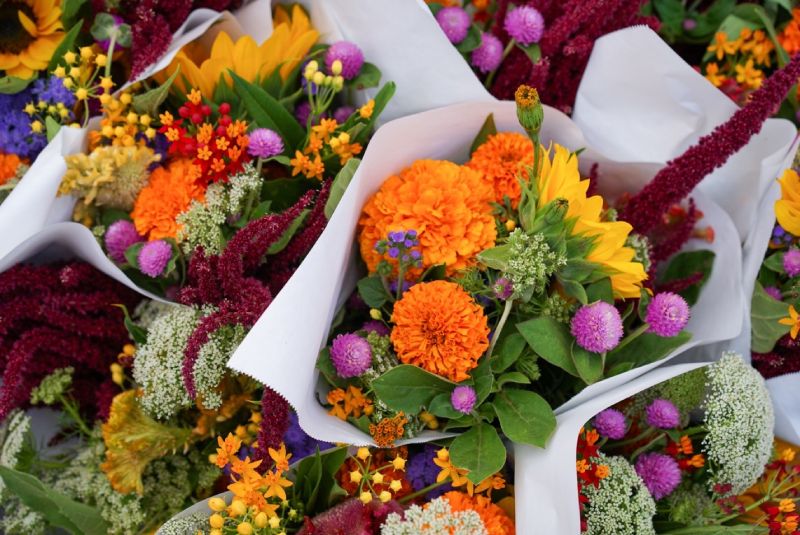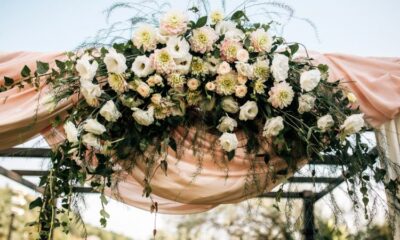Lifestyle
Flowers in Weddings: Traditions, Trends, and Tips

Imagine a wedding without flowers – unthinkable, right? Flowers, in their myriad of hues and fragrances, have been an integral part of wedding ceremonies across cultures and time periods. They add color, beauty, and symbolism to the celebration of love and union. In this article, we will explore the enchanting world of wedding florals, delving into the traditional and contemporary uses of flowers in weddings, from the bridal bouquet to venue decorations. Get ready to be immersed in the fragrant and colorful realm of wedding flowers, ordered via flower delivery in Canberra!
Bridal Bouquets and Beyond: Trends in Wedding Flowers
Wedding floral arrangements have continually evolved, blending tradition with contemporary trends. Today’s bridal bouquets are not just about roses or lilies; they are a creative expression of the bride’s personality and the wedding theme. Wildflower bouquets, with their relaxed and natural look, have gained popularity for rustic or bohemian-themed weddings. Peonies, ranunculus, and dahlias are sought-after for their lush, romantic appeal.
The trend of personalization extends to venue decorations as well. Floral arches and hanging installations create breathtaking backdrops, transforming spaces into magical settings. Minimalist designs with a focus on greenery and subtle floral accents cater to modern aesthetic sensibilities, while vibrant, lush arrangements continue to be a classic choice.
Sustainability in floral arrangements has also come into focus. Couples are increasingly opting for locally-sourced, in-season flowers, reducing the environmental impact of their celebrations. Furthermore, the incorporation of non-traditional elements like succulents, herbs, and even fruits into bouquets and centerpieces is on the rise, offering a unique twist and additional layers of meaning.
Edible flowers are also becoming a popular and interactive element in wedding florals. For evening receptions, the integration of soft, ambient lighting with florals creates an ethereal and romantic atmosphere. As weddings become more personalized, the choice of flowers is increasingly seen as an extension of the couple’s personal style and values.
Floral Symbolism in Weddings: Meaning Behind the Blooms
Flowers are more than just pretty additions; they carry deep symbolism. Understanding the meaning behind these blooms adds a layer of significance to wedding decorations.
Roses, universally symbolizing love and beauty, are a classic choice. The different colors of roses have their meanings; red for passionate love, white for purity, and pink for admiration. Lilies, often associated with purity and devotion, are another popular choice. In some cultures, lilies represent a wish for prosperity and happiness.
In Asian weddings, the lotus, symbolizing purity and enlightenment, holds a special place. The peony, often seen in Chinese weddings, represents prosperity, happiness, and peace. The chrysanthemum, with its ties to longevity and joy, is also favored in many Asian cultures.
In Mediterranean regions, olive branches and myrtle are incorporated for their connotations of peace and fidelity. Lavender, with its calming scent, often symbolizes devotion and love, and is a growing trend in European weddings. The choice of flowers can be a personal statement too, reflecting the couple’s story or heritage, adding a layer of intimacy and meaning to the wedding decor.
DIY Wedding Florals: Tips for Crafting Your Arrangements
For couples looking to add a personal touch to their wedding, DIY floral arrangements can be a fulfilling project. Here are some tips:
- Choose the Right Flowers: Opt for flowers that are in season and locally available. Consider the longevity of the flowers to ensure they stay fresh throughout the ceremony.
- Start with a Theme: Your floral arrangements should complement the overall theme and color palette of your wedding.
- Practice Makes Perfect: Experiment with different designs well before the wedding. Watch online tutorials or attend workshops to learn the basics of floral arrangements.
- Gather Your Tools: Essential tools include floral scissors, wire, tape, and ribbons. Don’t forget the vases or containers for your arrangements.
- Seek Help: Organize a flower-arranging party with friends and family. It’s a fun way to involve your loved ones in your big day.
Remember, DIY doesn’t mean doing it all alone. Consult a professional florist for advice or to take on the more complex arrangements.
Conclusion
Flowers, in their vibrant beauty and rich symbolism, have a timeless appeal in weddings. Whether it’s through a lavish floral arch or a simple, hand-tied bouquet, they encapsulate the essence of love and union. The traditions and trends in wedding flowers may evolve, but their significance in celebrating love remains eternal. As we embrace the old and the new, flowers continue to be a fundamental, enchanting element of wedding celebrations.
-

 Business4 weeks ago
Business4 weeks agoHow to fill MSME Form 1? Step-by-Step Guide
-
Business4 weeks ago
From Marine to Chief: The Leadership Journey of Sean Mannix
-

 Gadget4 weeks ago
Gadget4 weeks agoAfter Grand Success on BLDC Ceiling Fan, Eff4 Is Launching Smart Bulb
-

 Festivals & Events4 weeks ago
Festivals & Events4 weeks agoGoogle Celebrates Cherry Blossom Season with Animated Doodle
-

 Business2 weeks ago
Business2 weeks agoPrakash and Kamal Hinduja: Driving Social and Environmental Change
-
Education3 weeks ago
Fred DuVal: University Leadership as a Critical Resource for Climate Change Research and Life-Saving Solutions
-

 Sports4 weeks ago
Sports4 weeks ago2025 NASCAR Craftsman Truck Series Baptist Health 200 at Homestead-Miami Speedway: Race Preview, Prediction, Schedule, Entry List, Drivers to Watch and How to Watch
-

 Health2 weeks ago
Health2 weeks agoThe Hinduja Brothers Commitment to Global Health: Empowering Communities Across Borders













